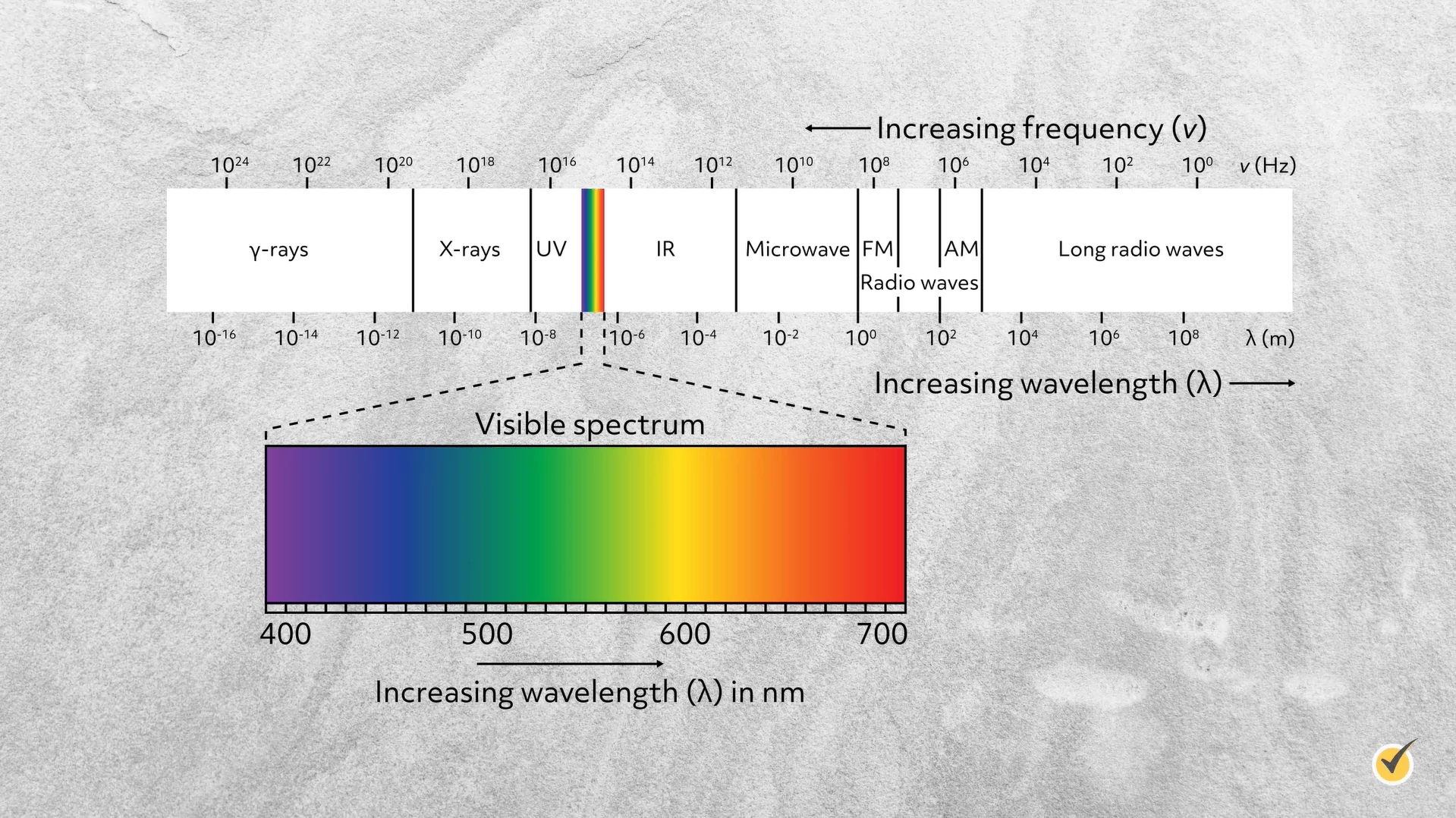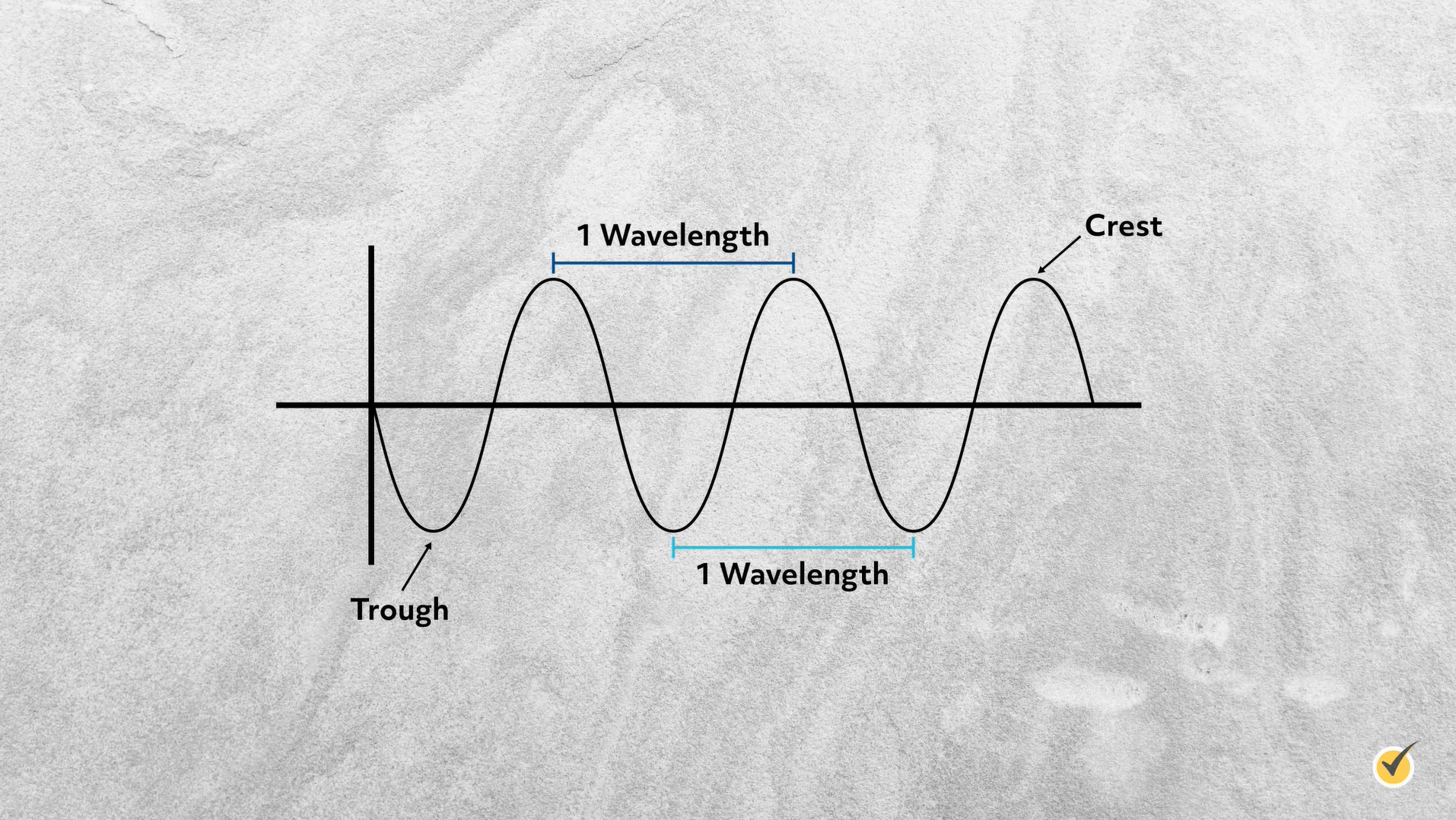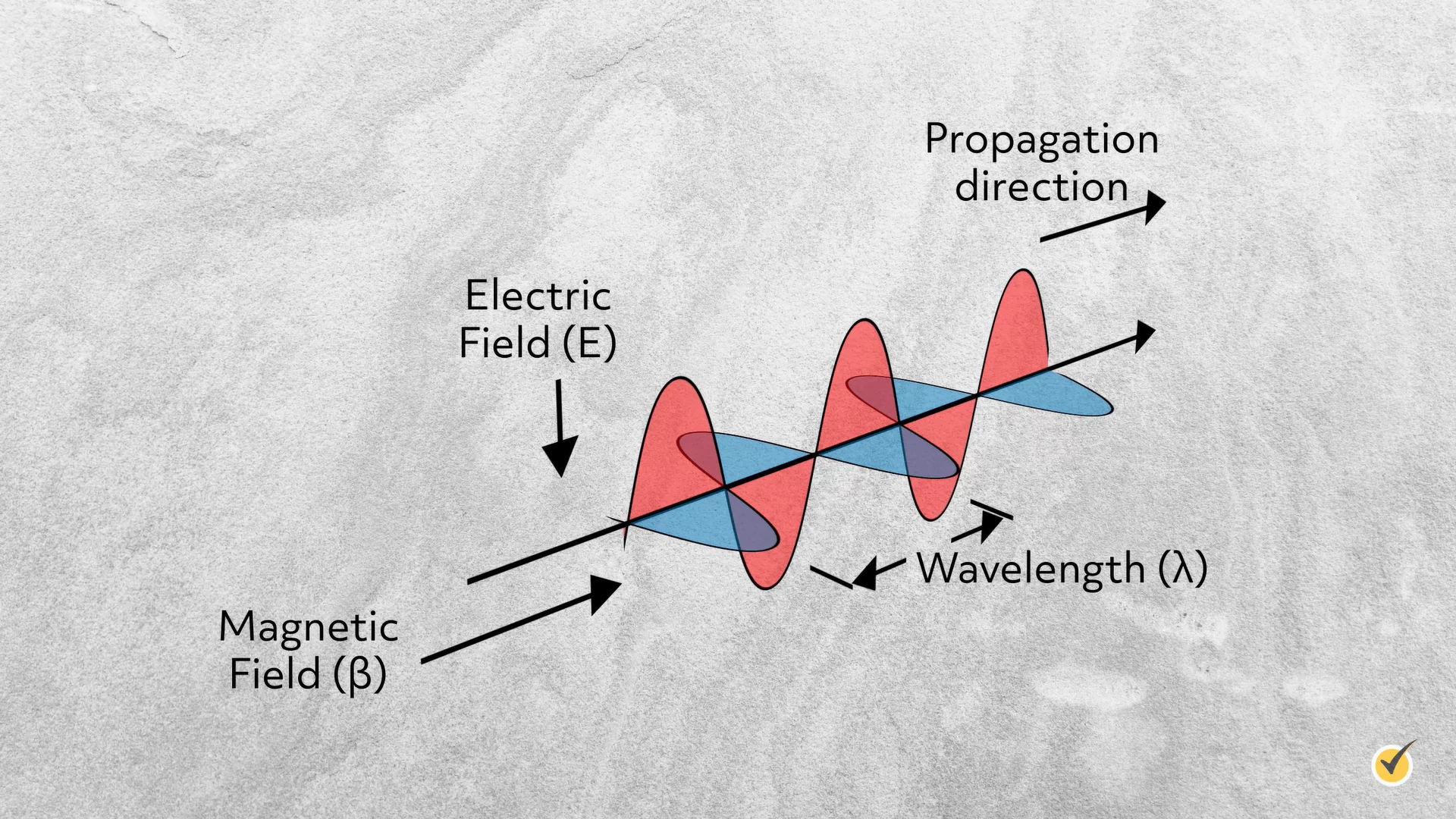
Hi, and welcome to this video on the electromagnetic spectrum! In this video, we’ll discuss what the electromagnetic spectrum is and go over the properties of electromagnetic waves. Let’s get started!
Electromagnetic Spectrum
You may have heard of the electromagnetic spectrum, but what, exactly, does that encompass, and why is it electromagnetic?
The electromagnetic spectrum is what we call all of the forms of electromagnetic radiation that travel at the speed of light while in a vacuum. All of these forms of radiation contain varying amounts of energy. Though we use the term radiation, only the higher-energy electromagnetic waves are dangerous because they are able to penetrate cells more easily.
You may be familiar with the color spectrum of a rainbow; this is actually just a small part of the electromagnetic spectrum. If you take that rainbow of colors and expand it out past visible light on both ends, you’ll eventually end up with the whole electromagnetic spectrum.

The highest-energy part of the spectrum consists of gamma rays and as you go down in energy, you find X-rays and then ultraviolet light, which is the radiation that causes sun burns. Next up is visible light, which is just the range of the spectrum that human eyes are able to detect. Violet light has the highest energy (just below ultraviolet) and red light has the lowest energy. Beyond that are infrared, microwave, and radio waves with the lowest energy end of the spectrum.
Wavelength and Frequency
All of these types of radiation act as waves with a wavelength, measured in meters, and a frequency, measured in units of Hz or cycles per second.
The wavelength of a light wave is considered to be the distance from crest to crest or trough to trough; where the trough is the lowest part of the wave and the crest is the highest. The frequency can be thought of as the number of oscillations per second or the number of crests or troughs that pass a certain point per second.

In a vacuum, these waves all travel at the speed of light, c, which is roughly 300,000 kilometers per second; faster than anything else in the universe! However, when light is traveling through air, water, or any other material, it slows down. The amount that it slows down depends on the material and how energetic the wave is.
The relationship between wavelength and frequency for a wave is described by a simple equation: \(v= λf\)
Where \(v\) is the velocity of the wave, \(λ\) is the wavelength, and \(f\) is the frequency. This equation shows the inverse relationship between the wavelength and the frequency. This means that if one increases, the other must decrease. For example, gamma rays have the highest frequencies and the shortest wavelengths, while radio waves have the lowest frequencies and the longest wavelengths. The velocity of an electromagnetic wave is generally constant for a given medium that it is traveling through.
The various wavelengths of electromagnetic radiation range from about 108 meters down to 10-16 meters. This is an incredibly enormous range!
So, what does the word electromagnetic mean anyway? Is it electric? Is it magnetic? All electromagnetic waves are composed of both electric and magnetic fields that oscillate at right angles to each other.

These are also called transverse waves. In the 1800s, James Clerk Maxwell discovered that there is an important relationship between electric and magnetic fields. He developed his famous equations, aptly known as Maxwell’s equations, that describe how moving electric fields create magnetic fields and moving magnetic fields can create electric fields. Electromagnetic radiation, or waves, are created when electrically charged particles, like electrons, change their momentum.
Review Questions
Now that we’ve gone over the electromagnetic spectrum and its properties, let’s test our knowledge with a couple of questions!
1. Do all gamma rays have the same frequency? Do all microwaves have the same wavelength?
- Yes, all gamma radiation is the same frequency, and, yes, all microwaves have the same wavelength.
- No, both frequency and wavelength can vary for each category of EM radiation.
- Yes, the gamma rays will have the same frequency, but the microwaves will vary in wavelength.
- No, the gamma rays will have different frequencies, but the microwaves will all have the same wavelength.
Each category of EM radiation encompasses a range, and over that range both the frequency and wavelength will vary. However, as the wavelength increases, the frequency must decrease.
2. Which type of radiation is most likely to be harmful to human tissues?
- X-rays
- Radio waves
- Infrared waves
- Green light
Only the very high energy types of radiation are able to penetrate and cause harm to human cells. Generally, these include gamma, x-ray, and ultraviolet radiation. Any of the lower energy types of radiation are not energetic enough to cause harm.
That’s all for our video on the electromagnetic spectrum! Thanks for watching, and happy studying!